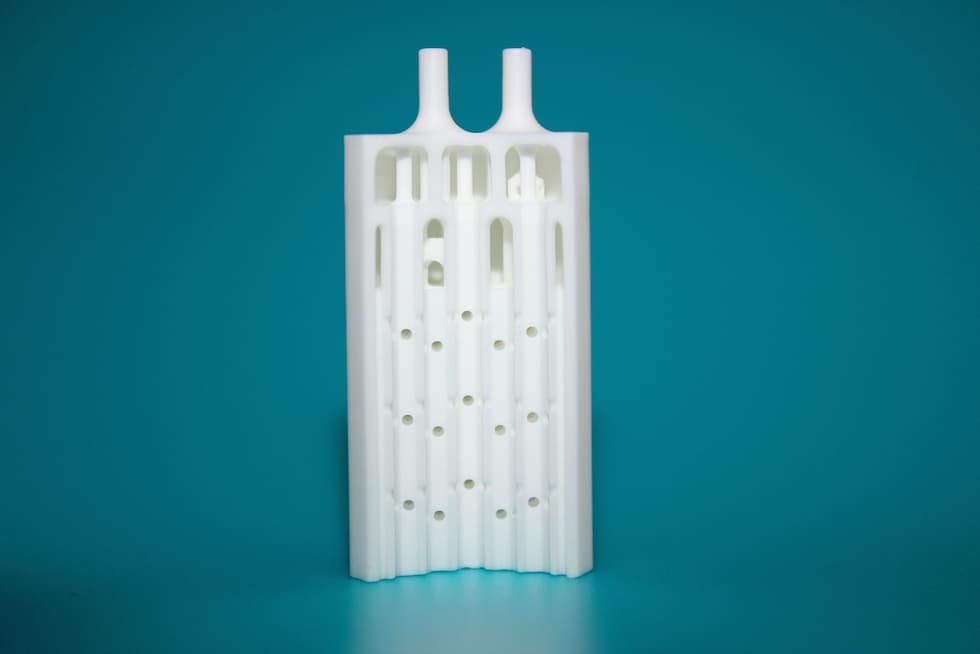
The team from the Fraunhofer Institute for Ceramic Technologies and Systems IKTS in Dresden believe the method has no limitations in terms of type or colour of material for the target components.
“This allows us to process ceramics, glass, plastic, or even metal using thermoplastic 3D printing. One more advantage is that several different materials can be produced at the same time,” said Dr Tassilo Moritz from Fraunhofer IKTS’s Materials and Processes business division.
The key to their technology lies in preparing optimum ceramic or metallic suspensions. The mixtures are said to rely on a thermoplastic binder that becomes liquid at temperatures of around 80°C. This is a crucial point in additive manufacturing as it means the suspensions can quickly cool down and one layer after another can be deposited in sequence. In this binder, they disperse powder particles of metal, glass, or ceramics.
”Our mixtures are very homogenous and we precisely set the optimum level of viscosity. Only then can the printer put out the droplet size suitable for the particular component contour. Our mixtures can’t be too liquid or thick. To achieve this, we have to master the preparation technique,” Moritz said in a statement.
The electrically generated temperature in the printer melts the suspension. After deposition, the droplets immediately harden as a result of the quick cooling process. The workpiece is then built up point-by-point on a flat platform. This allows different materials to be deposited at the same time via multiple application units.
“Another challenge is adjusting the behaviour of the different suspensions during the subsequent sintering of the components, to prevent any defects,” said Moritz. “To this end, we modify the initial powder through special grinding processes.”
In sintering, finely grained ceramic or metallic substances are heated under pressure. The temperatures of the substances remain so low that the structure of the workpiece does not change.
The advance from Fraunhofer is said to present new options for microreaction technology based on ceramic components. A future scenario envisaged for microreaction technology involves a small pharmaceutical plant next to a patient’s bed that is no bigger than a €2 coin. With wires and channels that are a few hundred micrometres wide, the microreaction plant mixes various drugs and fine-tunes them to the patient’s current health condition.
Until now, however, the development of these miniature chemical plants has been hindered by production technology.
“We can now build ceramic components that fit the application instead of the production process,” said Moritz. “To date, ceramic microreactors have mostly been milled out of plates. Internal and external sealing have always been a technological challenge for this. And there has been the problem of making connections that fit. Now we can just print them onto the ceramic component during manufacturing in whatever form.”




Nanogenerator consumes CO2 to generate electricity
Whoopee, they've solved how to keep a light on but not a lot else.